No one knew where he’d come from or what he was looking for—but an iridescent blue bird with a spray of rainbow tail feathers is hard to miss. Starting in April, residents of West Los Angeles have reported sightings of a feral peacock wandering the streets.
“It was really exciting and so majestic. Everybody came out to see him,” says Glenna Gordon, a photojournalist who lives in the area. “It was still during a pretty intense lockdown, so it felt like quite a sight.”
Some call him Peter; others named him Michael or Charlie. Local resident Jessica Long calls him “Roam-eo” because he seems to have staked out several square miles of residential neighborhoods he likes to roam through. The name that stuck, however, is Tivoli—the name of the street he was first reported seen on.

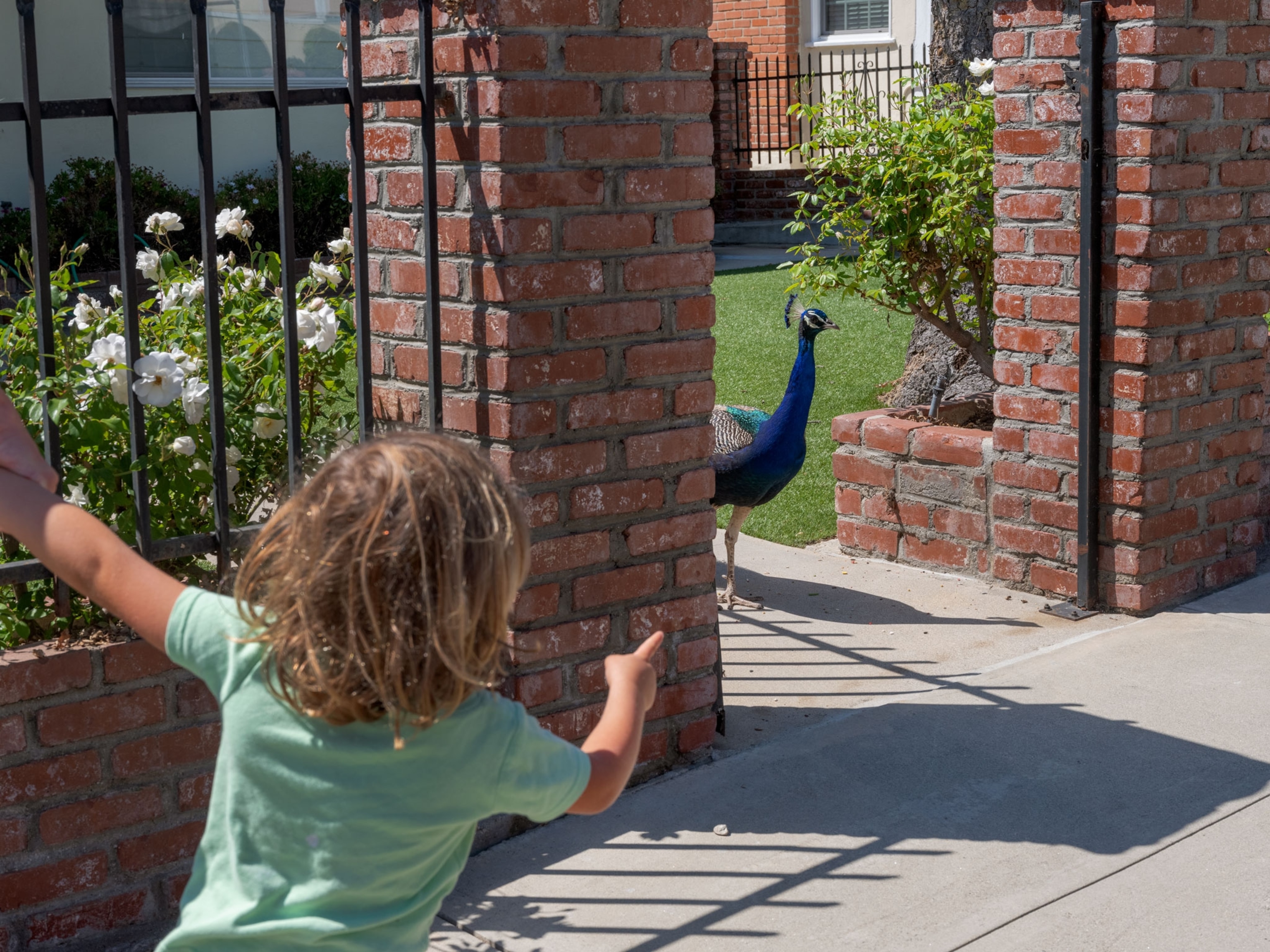
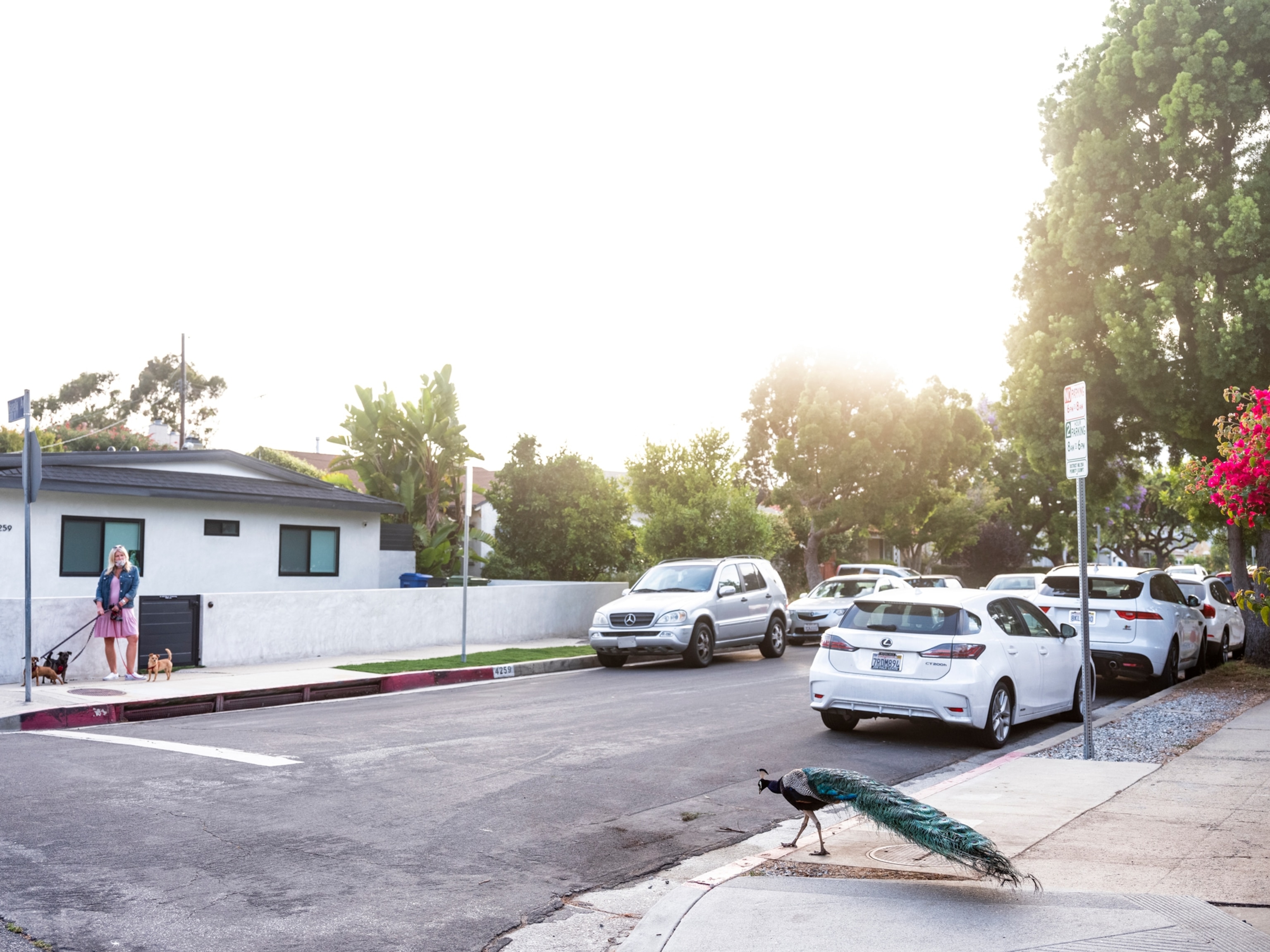
Long, who has a history of helping stray and feral cats, says caring for a bird—and a peacock, no less—was a first.
“I made it my mission to try to help him the best I could. I started researching everything I could about peacocks,” she says. “You couldn't call the L.A. Zoo. They wouldn't answer the phone. If you call L.A. [Animal Services], it was really hard to finally reach somebody who would call you back.”
With hours of research and the guidance of online peacock breeding groups, she started to figure it out. She now supplies the roughly 10-pound bird with what she calls a “buffet dinner”—an assortment of berries, birdseed, and dried earthworms. And every evening she does her best to keep him away from busy roads and neighborhood cats and dogs.
L.A.’s early peacocks
Feral peacocks are not new to L.A. County, says James Maley, an ornithologist at Occidental College in Los Angeles. In Arcadia to the east and Rancho Palos Verdes to the south, they’re present in such numbers that some consider them pests. In West L.A., however, a peacock sighting is quite unusual.
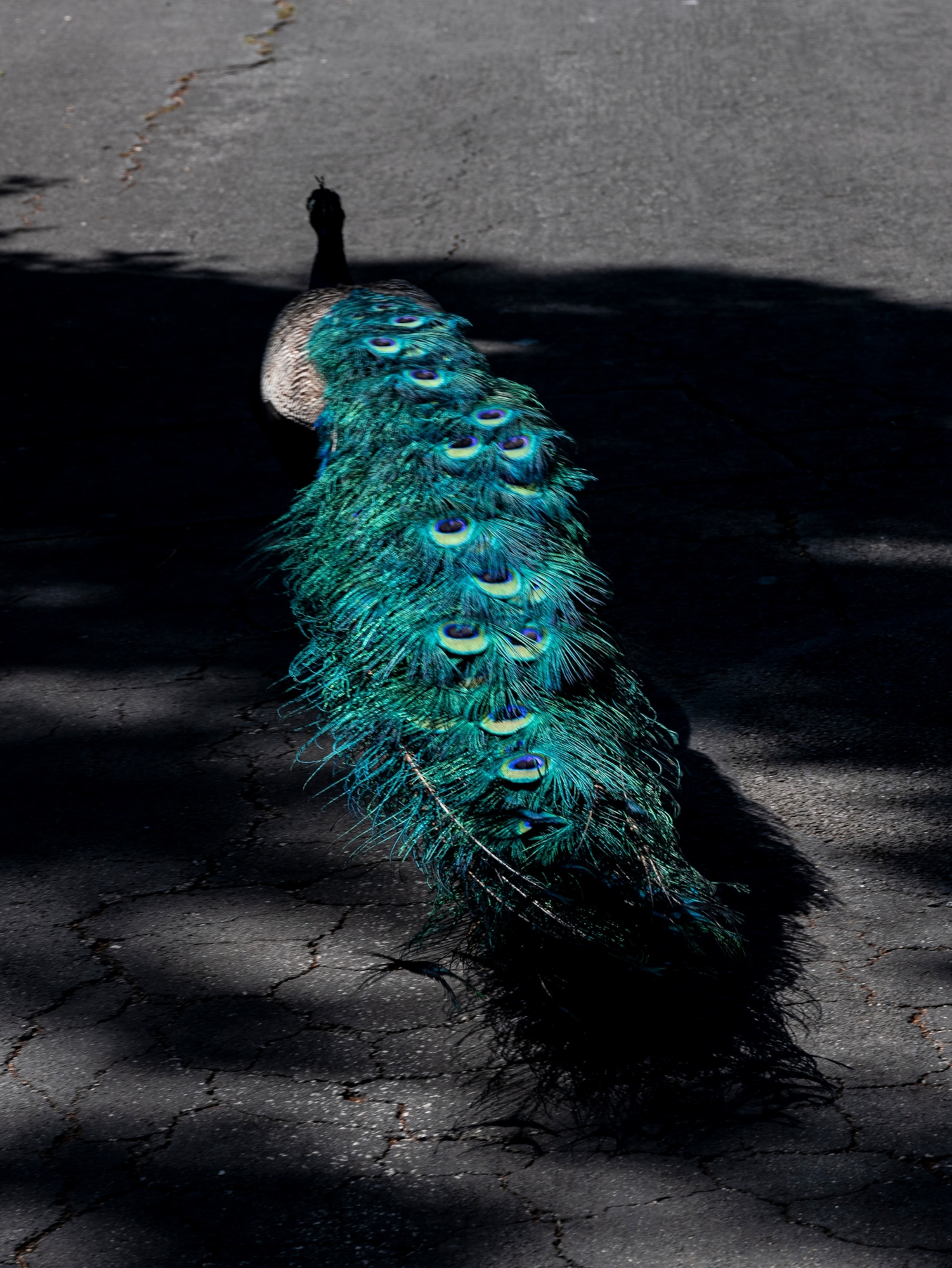

Peafowl first came to the area in the late 1870s when Arcadia’s founder, Elias Jackson “Lucky” Baldwin, imported them from India to his ranch, as ornamental curiosities and to help keep snakes and insects at bay. In 1947 the L.A. County government and the state of California purchased the ranch—peafowl and all—and developed it into the L.A. County Arboretum. To this day, hundreds of peafowl still range across the property and into Arcadia.
In the 1920s, on the Palos Verdes Peninsula, a similar situation had arisen. Frank Vanderlip, a banker who helped develop the peninsula in the early 1900s, received a gift of peafowl. Some say they came from chewing gum company founder William Wrigley, Jr., who kept them on his Catalina Island estate. Other research suggests that Vanderlip got the birds from the Baldwin family. Either way, by the 1970s, the peafowl began to venture into suburban neighborhoods, where they reproduced.
Ornithologist Maley suspects that Tivoli is related to the peafowl in the Palos Verdes area, about 25 miles south of West L.A. A peacock could easily walk that far, he says. Given the length of his tail, he may have been looking for a space to show off and attract a mate. A peacock’s tail is most resplendent during mating season, after which hormones trigger the loss of feathers—and Tivoli’s once-resplendent tail recently molted. (Learn more: How did the peacock get its spots?)
Peafowl in the city
Feral peafowl can stir up trouble in residential neighborhoods by feasting on gardens, but Maley says there’s not much risk of them becoming a destructive invasive species: “It's not really a problem because they’re not displacing anything that would normally otherwise be here.”
Peafowl are highly adaptable creatures, he says, and they “almost exclusively use habitats that have been altered by people.” The urban habitat doesn’t pose a challenge for them at all because as opportunistic omnivores, they’ll eat just about anything, from pet food to garbage.
Still, it’s somewhat uncommon to find feral peafowl in most cities, Maley says. They typically thrive in more tropical climates, so in addition to the Los Angeles area, peafowl have made homes for themselves in Miami, Orlando, and Tampa.
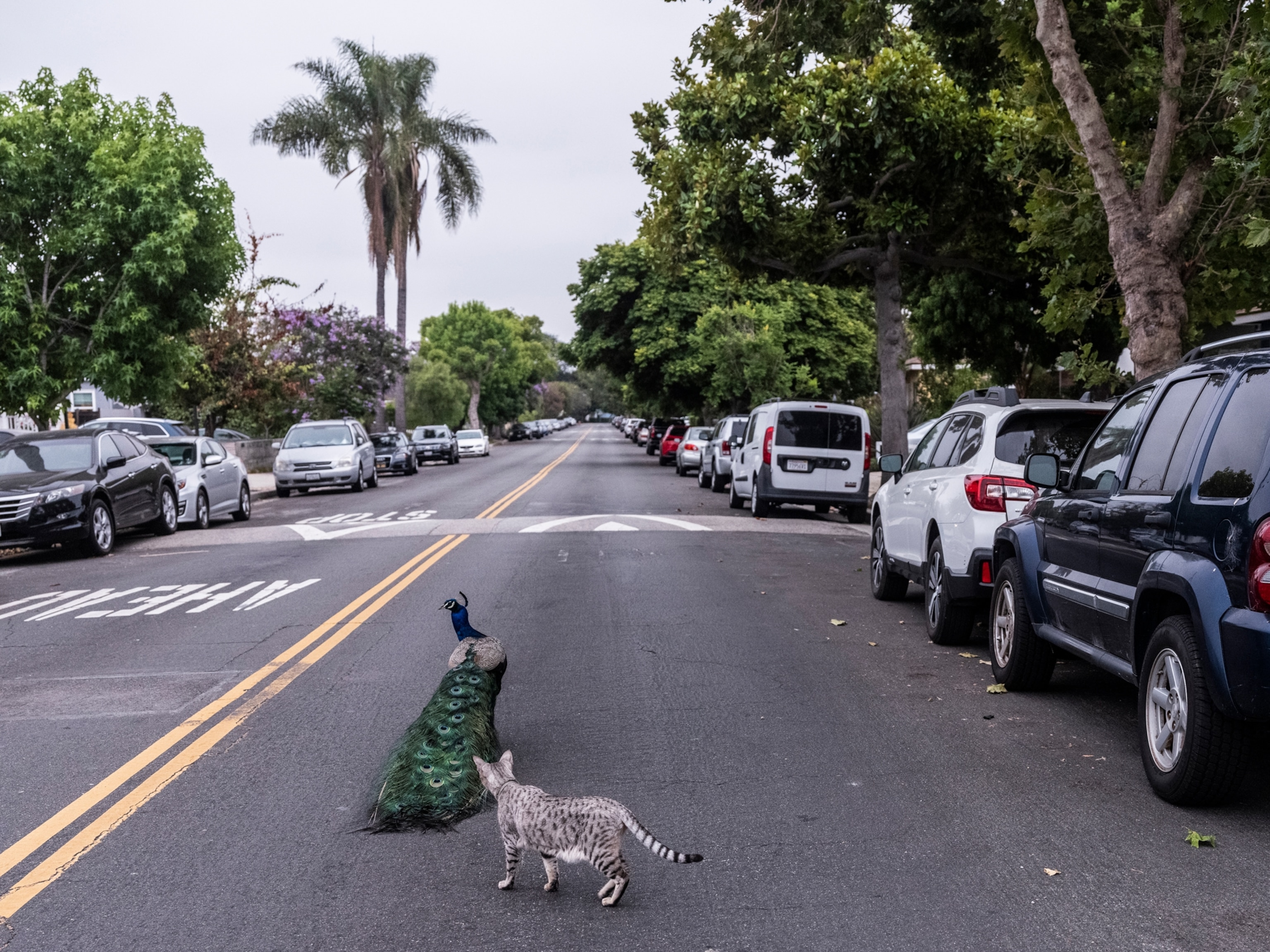
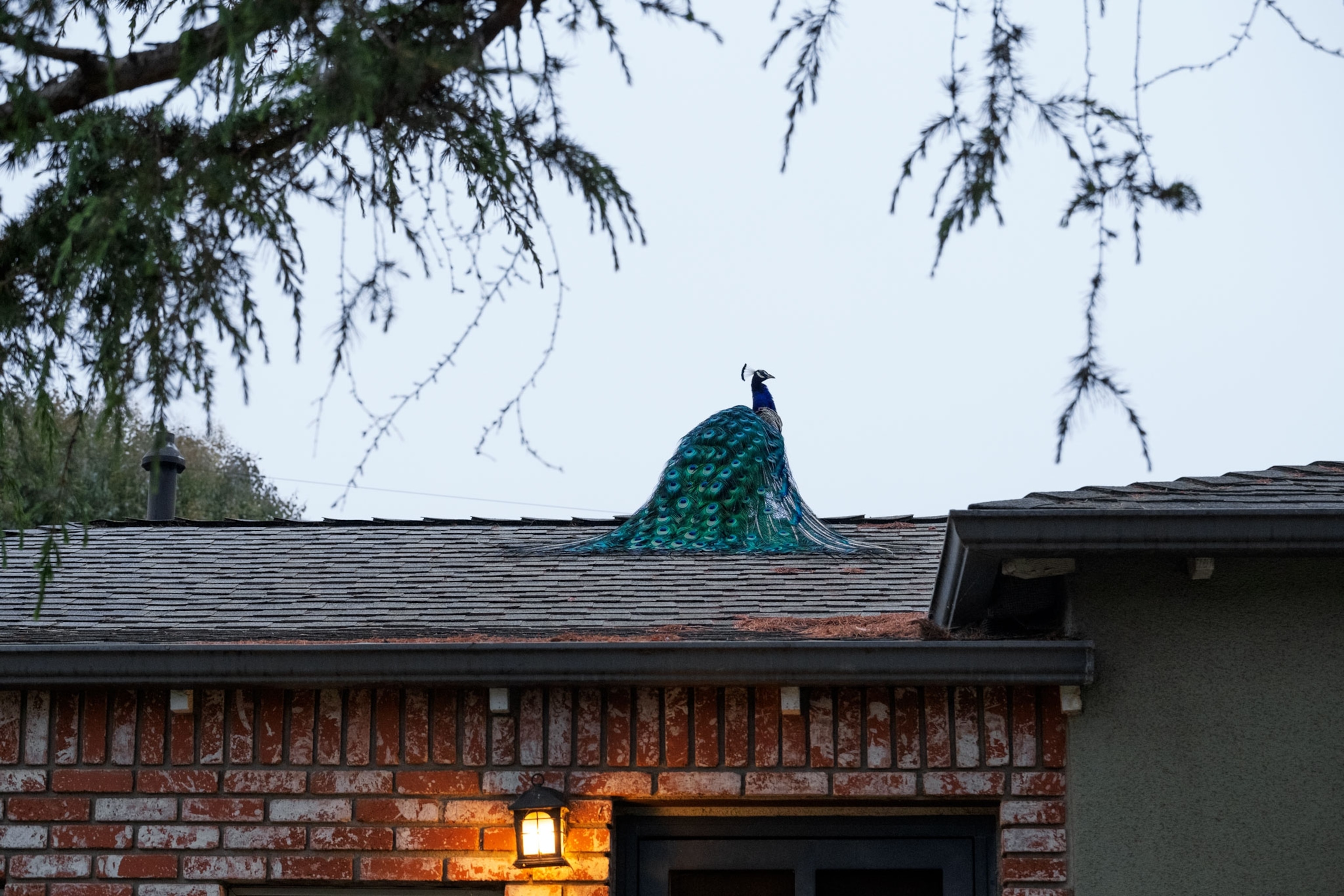
For the most part, West L.A. residents are happy to host Tivoli. He’s brought joy to the community where he’s chosen to settle, says Gordon, who’s been chronicling the peacock’s suburban adventures.
It’s become easier for Tivoli fans to find him because he’s developed a routine for himself. He has a favorite tree to roost in, and, starting at the crack of dawn, he begins roaming through the neighborhoods. People even started to record peacock sightings on a map.
They might do well to monitor his tail’s status, too. If Long is correct that Tivoli came to the area looking to mate, then he might resume his search next spring when his tail’s fully-feathered for attracting peahens.






